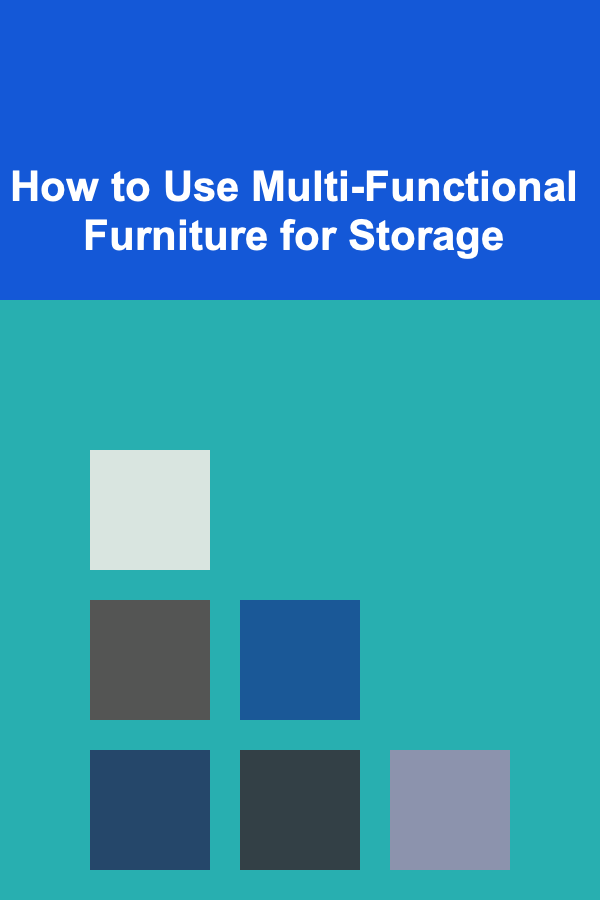
10 Essential Items for Your Meditation Checklist
ebook include PDF & Audio bundle (Micro Guide)
$12.99$9.99
Limited Time Offer! Order within the next:
Not available at this time

Meditation is a practice that can significantly improve your mental clarity, emotional stability, and overall well-being. Whether you're new to meditation or a seasoned practitioner, having the right tools and environment can make a world of difference. The right set-up not only helps you get into the right frame of mind but also makes the experience more comfortable and fulfilling.
In this article, we'll walk you through ten essential items you should include in your meditation checklist. These items will ensure you have everything you need to create a serene and conducive environment for your meditation sessions. Whether you're meditating at home, in a studio, or in a natural setting, these essentials will enhance your practice, making it easier to focus and achieve inner peace.
A Comfortable Meditation Cushion
One of the most important aspects of meditation is ensuring you're comfortable. You'll likely be sitting for extended periods, and discomfort can quickly become a distraction. A good meditation cushion (or zafu) provides support and encourages proper posture, allowing you to stay focused on your breath or mantra.
Why It's Essential:
- Posture Support: The right cushion can help align your spine, reducing the chances of back pain or discomfort.
- Comfort: A cushion ensures you won't be distracted by aching legs or a stiff back.
- Alignment: Elevating your hips slightly with a cushion allows your knees to fall naturally, improving your posture.
When choosing a meditation cushion, consider options like zafus, floor cushions, or even meditation benches. The key is to find something that supports your body comfortably in a seated position for an extended period.
A Quiet and Peaceful Space
A quiet environment is critical for a successful meditation practice. While meditation can technically be done anywhere, being in a space that encourages calm and relaxation can make all the difference. Whether it's a dedicated meditation room or a corner of your bedroom, your space should be free from distractions, noise, and clutter.
Why It's Essential:
- Minimized Distractions: A quiet space allows you to concentrate better, enhancing your meditation experience.
- Promotes Mindfulness: A calm, organized environment can serve as a visual reminder of your intention to cultivate mindfulness.
- Increases Focus: Meditation requires mental discipline, and a peaceful setting can significantly help with maintaining focus.
Consider choosing a space that has minimal foot traffic, a calming aesthetic, and is easy to keep clean and organized. This will help create a sacred, dedicated space for your practice.
A Timer or Meditation App
While you can certainly meditate without a timer, having a set duration for your practice is essential for building consistency and tracking progress. You don't want to worry about keeping track of time during meditation; a timer or meditation app can help you stay on track while allowing you to focus fully on the practice.
Why It's Essential:
- Structure: A timer gives your practice a clear beginning and end, making it easier to commit to a routine.
- Focus: With a timer set, you won't need to check the clock, allowing you to remain present in the moment.
- Progress Tracking: Many meditation apps offer guided sessions with different lengths, so you can gradually increase the duration of your meditation practice.
Apps like Headspace, Calm, and Insight Timer are great options. Alternatively, a simple meditation timer with a pleasant sound can work wonders in keeping your sessions structured.
A Meditation Shawl or Blanket
Meditation can sometimes lead to a feeling of coldness or discomfort, especially when you're sitting still for extended periods. A meditation shawl or blanket provides warmth and comfort, ensuring that your body remains relaxed and at ease. The act of covering yourself with a blanket can also help signal to your body that it's time to slow down and enter a peaceful state.
Why It's Essential:
- Comfort: It adds an extra layer of warmth during meditation, making it easier to stay still for longer.
- Relaxation: The sensation of warmth can help signal your body to relax, making it easier to settle into your practice.
- Symbol of Transition: Wrapping a shawl or blanket around yourself can act as a physical cue, helping to transition your body and mind into a state of meditation.
Look for blankets or shawls that are soft, lightweight, and easy to fold or adjust as needed. Natural fibers like wool or cotton are often preferred for their breathability and comfort.
Incense or Essential Oils
Scents can have a profound impact on your mood and emotional state. Many meditators use incense or essential oils to create a sensory environment that promotes relaxation, focus, and mindfulness. The right scent can help you ease into your practice, calm your mind, and set a spiritual tone.
Why It's Essential:
- Aromatherapy: Certain scents, like lavender or sandalwood, are known for their calming and grounding properties, enhancing the effects of meditation.
- Atmosphere: A gentle fragrance can create a calming atmosphere, signaling your brain that it's time to relax and focus.
- Mind-Body Connection: Scents can deepen your sensory connection to the present moment, reinforcing the meditative experience.
When choosing incense or oils, opt for calming, grounding fragrances such as lavender, frankincense, sandalwood, or cedarwood. Essential oil diffusers can be a cleaner option, especially if you prefer a less smokey atmosphere.
A Journal or Notebook
Many meditation practices involve reflection, and a journal is a powerful tool for deepening your practice. After your meditation session, writing down your thoughts, feelings, and experiences can help you process any insights, emotions, or shifts in perspective. Over time, your journal can also help you track your progress and personal growth.
Why It's Essential:
- Reflection: Journaling helps solidify the lessons and insights gained during meditation.
- Mindfulness: Writing allows you to capture the present moment and keep track of how you're feeling before and after your practice.
- Personal Growth: A meditation journal can serve as a record of your journey, helping you notice patterns, breakthroughs, and areas for improvement.
Choose a simple notebook that feels comfortable to write in. Some people prefer to write immediately after meditation, while others might reflect later in the day.
A Comfortable Meditation Chair
For some people, sitting on the floor for meditation can cause discomfort, particularly if you have back, hip, or knee issues. In such cases, a comfortable meditation chair is an essential item to include on your checklist. Meditation chairs are specifically designed to encourage proper posture and alignment, making it easier for you to meditate without strain.
Why It's Essential:
- Comfort: A chair helps provide support for the back and legs, making it possible to meditate without physical discomfort.
- Posture: Some meditation chairs offer adjustable angles that support a straight spine, promoting good posture throughout the practice.
- Accessibility: A chair is a great option for those who cannot sit comfortably on the floor due to health issues.
Meditation chairs come in various designs, such as kneeling chairs, cushions with back support, or even folding chairs. Look for one that supports your body comfortably while allowing you to sit upright without slouching.
A Soft Eye Mask or Blindfold
If you're looking to block out external distractions, an eye mask or blindfold can be a useful tool for deepening your meditation practice. By covering your eyes, you help eliminate visual distractions, allowing you to focus inward and become more attuned to your breathing and thoughts.
Why It's Essential:
- Sensory Reduction: Blocking out light and visual input can help calm the nervous system and promote a deeper, more introspective meditation session.
- Improved Focus: With fewer distractions, your mind can settle into the present moment more easily.
- Relaxation: The soft pressure from the eye mask can create a feeling of relaxation, making it easier to focus on your inner experience.
Choose a soft, comfortable mask made of breathable materials like cotton or silk. If you prefer a more advanced option, a weighted eye mask can enhance the feeling of calm and security during meditation.
A Guided Meditation Script or Audio
For those new to meditation or who find it difficult to meditate on their own, a guided meditation can be an essential item to have. Guided meditations typically come in the form of audio recordings or scripts, where an instructor or guide leads you through the process, providing instructions on how to focus, breathe, and remain present.
Why It's Essential:
- Support: Guided meditations provide structure, which is especially helpful for beginners who might find it challenging to meditate in silence.
- Focus: The guide helps keep your mind from wandering, offering visualizations or reminders to stay present.
- Variety: There are a variety of guided meditations available, from those focused on stress relief to others aimed at mindfulness or spiritual growth.
You can find guided meditations in apps like Calm, Insight Timer, or YouTube, or even create your own using scripts.
A Meditation Bell or Gong
Sound has been used for centuries as a way to signal the beginning and end of a meditation session. A meditation bell or gong creates a gentle sound that serves as an auditory cue to enter a meditative state or to mark the end of your practice. The sound of a bell or gong can also help anchor your awareness, bringing you back to the present moment if your mind begins to wander.
Why It's Essential:
- Sound as a Cue: A bell or gong can serve as a clear signal to begin or end your practice, establishing a routine and helping you settle into your meditation.
- Mindfulness: The sound of the bell encourages mindfulness, allowing you to center your attention on the sound as it resonates.
- Spirituality: The bell or gong is often associated with Buddhist and other spiritual traditions, adding a sense of sacredness to your practice.
Consider investing in a high-quality bell or gong that produces a rich, clear sound. There are also digital apps available that mimic the sound of bells or gongs.
Conclusion
Having the right tools for meditation can significantly enhance the experience, helping you focus and maintain a steady practice. The ten items on this checklist are designed to support your meditation journey, providing comfort, structure, and mindfulness. Whether you're creating a dedicated meditation space or looking to improve your practice, these essentials will help you cultivate a peaceful, focused, and fulfilling meditation routine.
By ensuring that you have the necessary tools, you're setting yourself up for success, allowing your meditation practice to deepen, evolve, and provide lasting benefits to your overall well-being.

Becoming a Successful Product Analyst: Essential Skills for Analyzing Market Trends
Read More
How to Make a Checklist for Organizing Financial Statements
Read More
How to Plan a Family Movie Marathon on a Budget
Read More
How to Use Multi-Functional Furniture for Storage
Read More
How to Ace the GRE Quantitative Reasoning: A Comprehensive To-Do List
Read More
10 Emerging Trends for Sustainability Officers to Watch
Read MoreOther Products

Becoming a Successful Product Analyst: Essential Skills for Analyzing Market Trends
Read More
How to Make a Checklist for Organizing Financial Statements
Read More
How to Plan a Family Movie Marathon on a Budget
Read More
How to Use Multi-Functional Furniture for Storage
Read More
How to Ace the GRE Quantitative Reasoning: A Comprehensive To-Do List
Read More